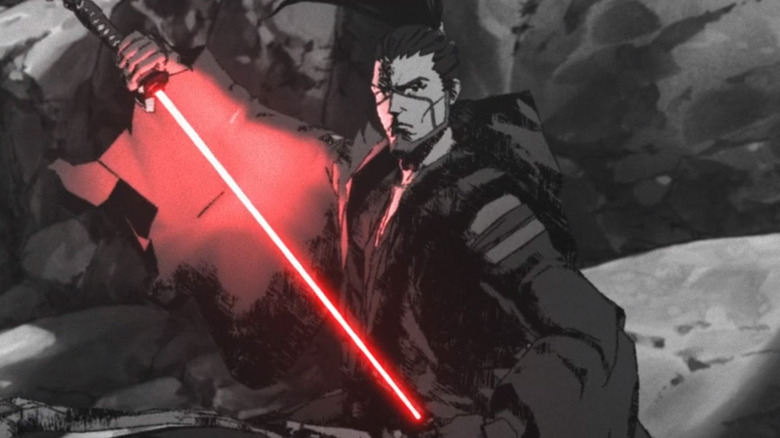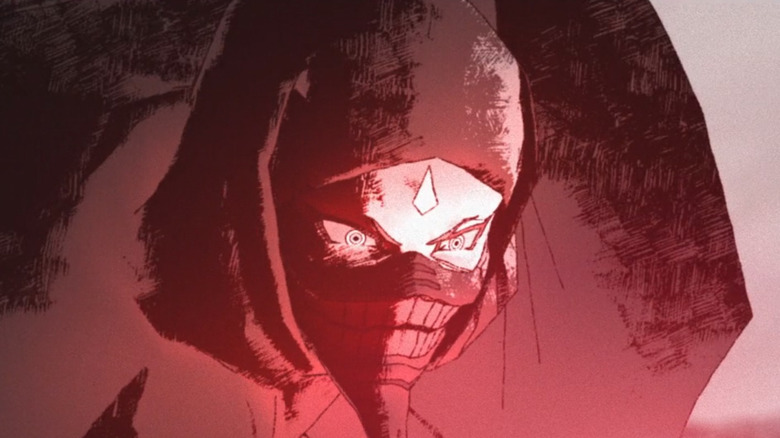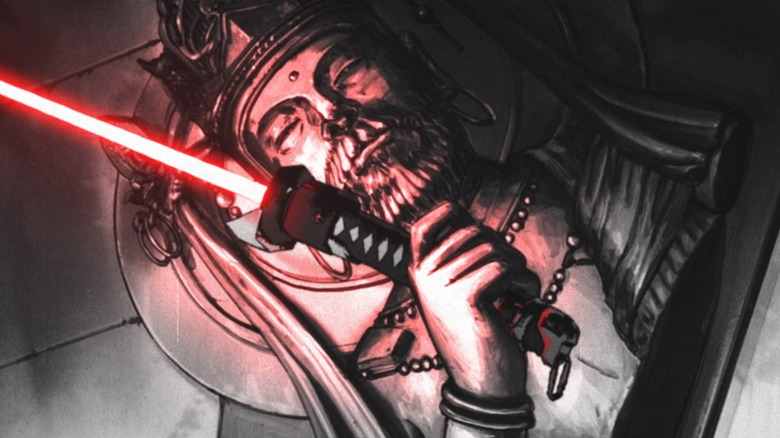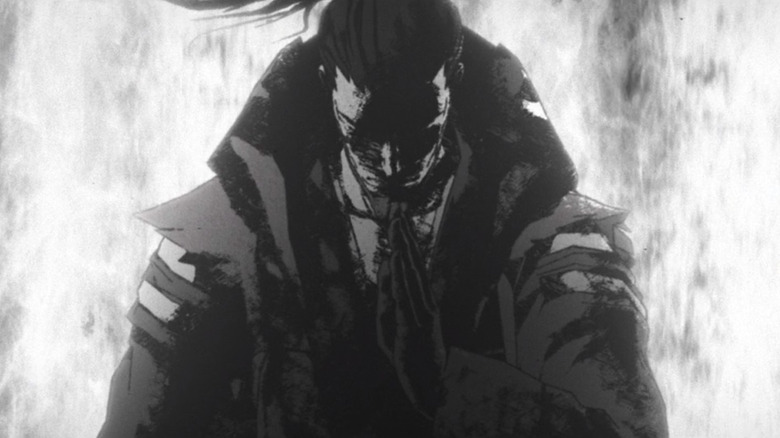'Your Lightsaber Is Red' - The Obscure Star Wars Story That Made A Sith The Hero
Part of what's always made "Star Wars" so fun is the depth and diversity of its universe. There are the core stories that focus on the Skywalkers, but there are also tons of shows, novels, comics, and video games set in far-off corners of the galaxy. Tales of fierce bounty hunters or clone trooper battalions; the birth of a rebel spy network; the ancient Sith empire. All these and more have been explored over the years, both in canon and in the less rigid Legends timeline.
The animated anthology series "Star Wars: Visions" takes this sense of exploration to the extreme, with every single episode showing a completely independent story in a wholly unique visual style. Every installment exists in its own canon, allowing the creators to get truly wild with the kinds of stories they can tell. And of all the "Visions" episodes, none have been more universally celebrated than the Season 1 opener, "The Duel."
Set on the Outer Rim world of Genbara, "The Duel" follows a Force user known only as the Ronin. When the small town he's visiting is attacked by bandits, he steps up to defend the people, ultimately crossing lightsaber blades with the gang's leader — a Sith Lord. The twist is that the Ronin also reveals a red saber, marking himself as a former Sith warrior as well. Both the short and the accompanying book "Ronin: A Visions Novel" explore the idea of a heroic Sith, shifting the cosmic balance of "Star Wars" in fascinating ways in order to do so.
The Ronin's alternate Star Wars galaxy explained
It's clear from the first few minutes of "The Duel" that this isn't the typical "Star Wars" universe. There are still Trandoshans, astromech droids, and other markers of the franchise, but the whole aesthetic aligns far more closely with the samurai films and legends that George Lucas took inspiration from. In the "Ronin" novel, we get a better look at this alternate "Star Wars" history — a world in which the Jedi are agents of the ruling empire and the Sith are rebels fighting those in power.
This isn't Emperor Palpatine's evil regime, but a less specific empire that seems to still be similarly oppressive — at least, according to those fighting against it. The Sith are described as Jedi who didn't want to simply be servants of a larger power structure; glorified enforcers of the ruling elite. However, the organized Sith rebellion was ultimately quashed by the empire and the Jedi, leaving its remnants to fight for scraps as bandits on the fringes of the galaxy. The Ronin was once one of these Sith fighting the powers that be, but he now roams the galaxy as a wandering loner, his red lightsaber the only hint at his complicated past.
The Duel's vision of the Jedi fits with the Star Wars prequels
At first, it might seem completely novel for the Jedi to be portrayed as mindless agents of a corrupt power structure. Take a deeper look at the "Star Wars" prequels, however, and you'll realize that George Lucas explored the very same idea in his films.
The animated "Clone Wars" series gets even deeper into the weeds with this storyline, revealing how the Jedi Council led itself down a dark path of dogma and state-mandated violence. The Clone Wars began because many systems wanted to secede from the Republic: a government that many had lost faith in. But rather than seek a peaceful resolution or speak out against the growing corruption within the Galactic Senate, Yoda, Mace Windu, and the other Jedi leaders willingly became soldiers of the state.
It's really interesting to see a non-canon story like "The Duel" explore this idea even further, portraying the Jedi as full-blown tools of a dangerous empire. The Sith are far from paragons themselves in the alternate universe of the short, but they do embody a kind of freedom and rebellion that usually belongs to the good guys in "Star Wars."
The Ronin shows that there are good things about the Sith
The nature of the dark side in "Star Wars" can make it difficult to create a nuanced or sympathetic villain. Typically, when you begin to perform actions that embrace tenets of anger, vengeance, or violence, the dark side of the Force corrupts you and pushes you to do even more. What might start out as good intentions for someone like Count Dooku eventually collapse as the promise of power grows. But does every Sith need to be a maniacal villain with an endless thirst for strength and blood?
In their alternate universe, "The Duel" and "Ronin: A Visions Novel" show a different path. The Sith's desire for individual power manifests as a resistance to servitude — an idea intrinsic to samurai history and the politics of feudal Japan. The book in particular explores the idea of what it means to truly rule your own life. The Ronin has no master but himself, and he still wields a red lightsaber. Perhaps the story is suggesting that the Jedi will always be bound by institutional rules — an idea that comes up again and again in the canon. In this way, true liberty and independence can be seen as Sith ideals, but ones that are actually quite admirable to strive for.
It remains to be seen if Disney will be willing to explore this less binary view of the "Star Wars" mythology more in its own canon stories. We can only hope.



